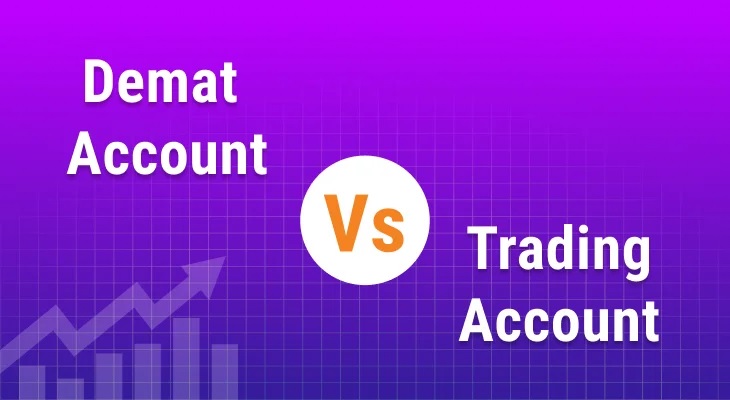Differentiating between a demat and a trading account is like negotiating the maze-like paths of financial skill in the wild world of the stock market. A free demat account is the gatekeeper for your portfolio of digital shares and maintains oversight over the market’s intangible wealth whereas trading account is where buying and selling takes place. Let’s explore more.
Demystifying the Demat Account
Demat Account Defined
Actually, the demat account is a digital wallet where you can keep securities (as it holds the word short for the dematerialized). That is the digital way of keeping all the securities like stocks, bonds, and so on in electronic form. Physical share certificates were existences that demat accounts replaced, bringing the change like no one else.
Safe and Secure Storage
The introduction of demat accounts also has the benefit of virtualising the paperwork and the risks that come with them eliminated. No more concerns for disappointed shareholders as investment certificates are now automatically stored safely on your digital secure accounts. Here, time and convenience will be ensured – this is just one more factor that facilitates the protection of your holdings.
Free Demat Accounts
Now, many banks or other financial institutions provide free demat accounts, which allow a person to trade in the stock market easily without paying any charge. One can go with the zero-charge demat account, which has facilities of no account opening or maintenance charges annually, making it a sensation for those who are in the process of opening the depository account for the first time and yet remain with their pocket intact.
Trading Accounts Unveiled: The stock market doorway
Trading Accounts Essentials
While the central demat account acts as the primary holder of all investments of a demat account user, a trading account empowers users with the convenience of trading in and out by themselves. It is the intermediary that connects you to stock markets so you can buy and sell stocks. Fundamentally, once a time comes when you kindly want to open a deal, like buy some shares or sell some extraneous investments that you hold – all that activity runs through your Trading Accounts.
Dynamic Nature of Trading
Demat and trading accounts differ in their nature. While demat offers static or less dynamic possibilities, trade brings more dynamics to the account. It becomes a real-time display of stock market activity. All clearing of the buy and/or sell orders, volatility in prices of stocks, and every transaction execution are traced in your account. The best part here is the interface that lets you intertwine with the movement of the market and be a part of the exciting world of stock trading.
Understanding Brokerage Charges
On the contrary, many traders have a demat account they get for free; often, demo accounts involve some demands in their way. This is actually the fee that the instruction: humanise the given sentence. The charges are the fees you pay to the brokerage firm initiating your trading order. You should realise that these charges are of particular importance and incorporate them into your investment strategy.
Conclusion
Investors must understand the differences between demat and trading accounts in the ever-changing stock market environment. The trading account makes buying and selling easier, while the demat account safely stores your shares in electronic form. The above knowledge is essential for easy market participation. Understanding these distinctions enables traders to effectively negotiate the complex terrain of the stock market in the ever-changing world of investing. It serves as a compass for navigating the unpredictable currents of the share market.


